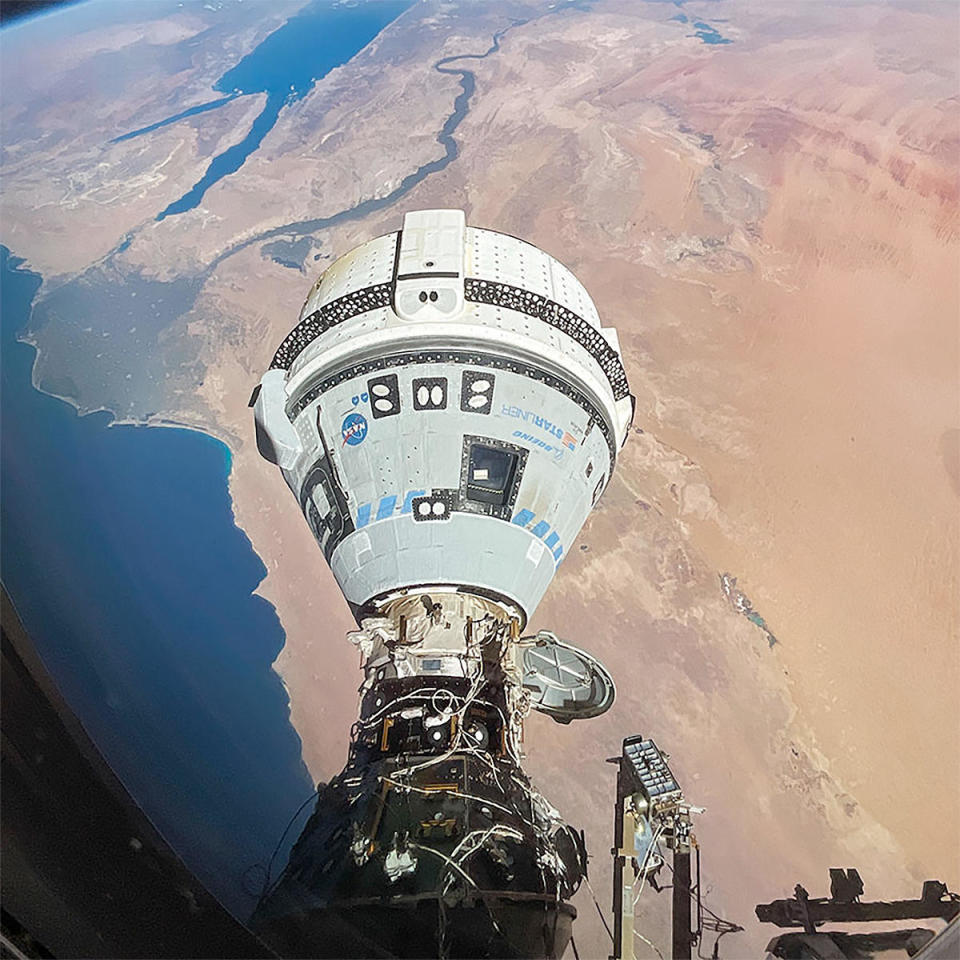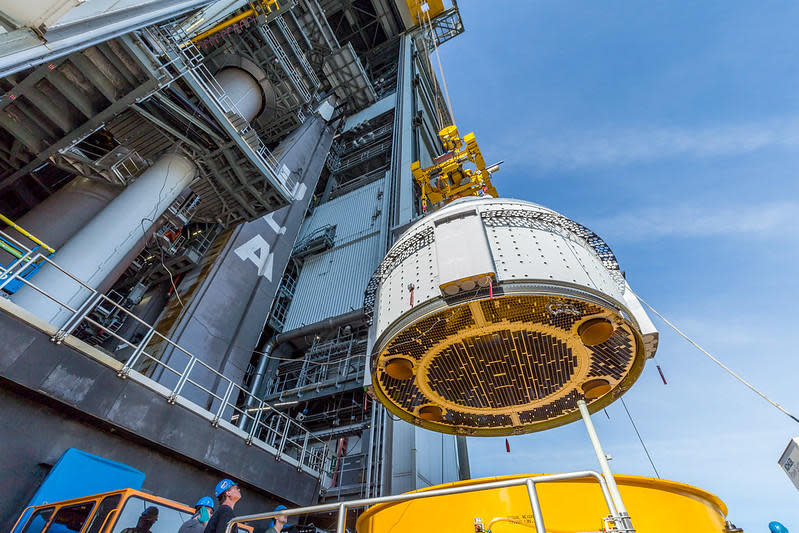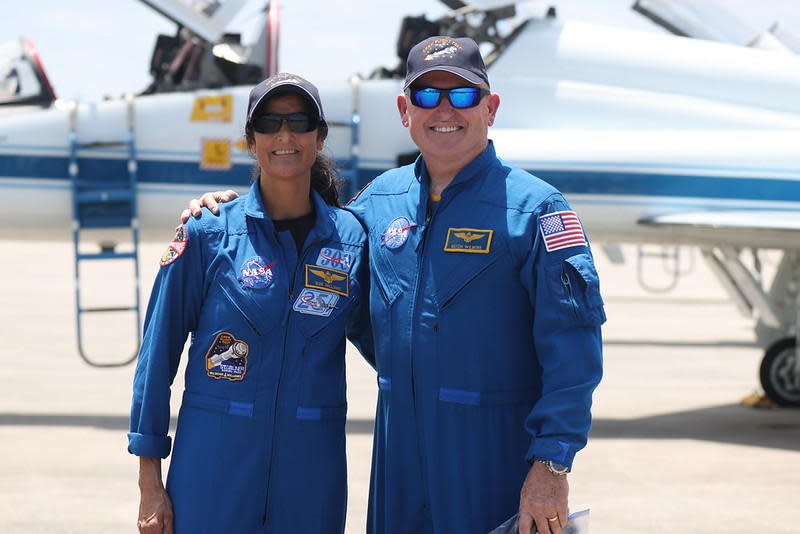Boeing’s Starliner capsule returns to Earth pending indefinitely NASA announced Friday that it is awaiting results from new thruster tests and ongoing analysis of helium leaks that occurred during the craft’s rendezvous with the International Space Station.
But agency officials insisted Starliner commander Barry “Butch” Wilmore and co-pilot Sunita Williams they are not “stranded” in space.

“We don’t have a targeted (landing) date today,” Steve Stich, NASA’s Commercial Crew Program manager, told reporters during a teleconference. said. “We will not target a specific date until the tests are completed.
“So essentially, complete the testing, complete the fault tree, bring that analysis to (the mission management team), and then do an enterprise level review. And then we’ll lay out the rest of the plan, from landing to separation. I think we’re on a good path.”
The problem with NASA and Boeing The Starliner’s service module, which houses the helium lines, thrusters and other critical systems, is jettisoned and burned up in the atmosphere before re-entry.
Since engineers cannot examine the equipment later, Wilmore and Williams want to collect as much data as possible before returning home.
But the crew’s continued long stays at the space station while analysis continues has led some observers to suggest that Wilmore and Williams were stranded in orbit, an impression that appears to have taken hold given the lack of updates from NASA as the target landing date has been pushed back repeatedly.
Stich and Mark Nappi, Boeing’s Starliner program manager, said this definition is a misnomer.
“It’s pretty painful to read about what’s going on there,” Nappi said. “We had a really good test flight… and it’s being evaluated pretty negatively. We’re not stuck on the ISS. The crew is not in any danger, and there’s no increased risk when we decide to bring Suni and Butch back to Earth.”
“I want to make it very clear that Butch and Suni are not stranded in space. Our plan is to continue to return them on the Starliner and get them back home at the right time. We’ll have to work a little harder to get there for the final return, but they are safe on the space station,” Stich said. “Their spacecraft is working well and they are enjoying their time on the space station.” he added.
Starliner launched with a known helium leak on the program’s first piloted test flight on June 5. The other four developed during the craft’s rendezvous with the space station, when jets were rapidly pulsed to fine-tune Starliner’s approach.


While at anchor at the station, valves are closed to isolate the helium system, eliminating additional leaks. But when Wilmore and Williams leave and head for home, the valves will be reopened to re-pressurize the lines or manifolds.
Despite the known leaks, the spacecraft will have 10 times the amount of helium it needs to get home, but engineers want to make sure the leaks don’t get worse when the system is repressurized, Stich said.
All five rear-facing thrusters on Starliner’s service module failed to function as expected during approach to the space station on June 6.
After deployment, four of the five jets successfully test fired and are thought to be good for separation and reentry, although at slightly lower power levels than expected. The fifth booster was not “fired” because its previous performance suggested it had actually failed.
But executives want to find out what’s causing the unexpected behavior in the other four. Starting next week, a new booster identical to those on the Starliner will be test-fired at a government facility in White Sands, New Mexico, just as the orbiters were fired during the Starliner’s rendezvous and docking.
“We’ll recreate that profile,” Stich said. “Then we’ll put a very aggressive profile on the thruster for the (detachment-reentry) phase.”


It’s possible that the glitches in the rear-facing thrusters were caused by higher-than-normal temperatures resulting from Starliner’s position relative to the sun, or by a rapid, repetitive firing sequence orchestrated by the flight software — or both.
Ground tests, expected to last “a few weeks”, could provide evidence one way or another.
“This will be a real opportunity to examine a thruster on the ground, just like we have in space, a detailed examination,” Stich said. “Once those tests are complete, we will look at the landing plan.”
As for the impression that the crew was stranded in space, Stich and Nappi pointed out Wednesday that a defunct Russian satellite in a slightly lower, more inclined orbit than the space station experienced a catastrophic “event” that produced more than 100 fragments. traceable debris
While flight controllers assessed the orbits of the debris, the space station’s nine-person crew was told to “stay put” in their respective spacecraft, ready to immediately separate and return to Earth in the event of a damaging impact.
Two Russian cosmonauts and NASA’s Tracy Dyson boarded the Soyuz ferry ship, while three NASA astronauts and another cosmonaut boarded their SpaceX Crew Dragon. Wilmore and Williams emerged from the safe harbor inside the Starliner and were given permission to fly home if deemed necessary.
About an hour later, the crew was cleared to return to normal work. If the Starliner had been deemed unsafe, Wilmore and Williams likely would have been told to seek shelter aboard the Crew Dragon. However, this was not the case.
“We have approval to be a lifeboat in the event of an emergency on the ISS,” Nappi said. “That means we can come back with Starliner whenever we want, and that was proven this week.”
Undecided voters in North Carolina are fed up with the first presidential debate of 2024
NASA insists Boeing Starliner crew is not ‘stranded’ in space
Longtime CBS News national security correspondent David Martin honored at Pentagon